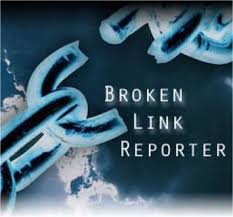
According to Treasury Secretary Henry Paulson, the chief proponent of the big bank bailout, flooding the banks with taxpayers’ money was supposed to get them to start lending freely again. And that, in turn, was supposed to stabilize the markets and prevent the downturn from being worse than it otherwise would be.
It was not entirely clear from the start exactly how Mr. Paulson would ensure that things would go that way. Indeed, earlier this month, shortly after the bailout was enacted, The Times’s Mark Landler reported that Treasury officials also wanted to steer the bailout billions to banks that would use the money to buy up other banks.
Now, lo and behold, with $250 billion in bailout funds committed to dozens of large and regional banks, it turns out that many of the recipients of this investment from taxpayers are not all that interested in making loans. And it appears that Mr. Paulson is not so bothered by their reluctance.
Mr. Paulson and the bailout recipients have some explaining to do. Congress should plan hearings as soon as possible — and take action to set a clear strategy.
In his column on Saturday, The Times’s Joe Nocera told about a conference call that he had listened in on recently between employees and executives of JPMorgan Chase. Asked how an infusion of $25 billion of bailout funds would change the bank’s lending policy, an executive said the money would be used to buy other banks.
“I think there are going to be some great opportunities for us to grow in this environment, and I think we have an opportunity to use that $25 billion in that way,” the executive said. He added that the money could also be used as a backstop in case “recession turns into depression or what happens in the future.”
There was not a word about lending — not to businesses or home buyers or car buyers or students or other consumers. Just the opposite. In response to another question, the executive said that the bank expected to continue to "tighten credit".
SOURCE: NY TIMES
It was not entirely clear from the start exactly how Mr. Paulson would ensure that things would go that way. Indeed, earlier this month, shortly after the bailout was enacted, The Times’s Mark Landler reported that Treasury officials also wanted to steer the bailout billions to banks that would use the money to buy up other banks.
Now, lo and behold, with $250 billion in bailout funds committed to dozens of large and regional banks, it turns out that many of the recipients of this investment from taxpayers are not all that interested in making loans. And it appears that Mr. Paulson is not so bothered by their reluctance.
Mr. Paulson and the bailout recipients have some explaining to do. Congress should plan hearings as soon as possible — and take action to set a clear strategy.
In his column on Saturday, The Times’s Joe Nocera told about a conference call that he had listened in on recently between employees and executives of JPMorgan Chase. Asked how an infusion of $25 billion of bailout funds would change the bank’s lending policy, an executive said the money would be used to buy other banks.
“I think there are going to be some great opportunities for us to grow in this environment, and I think we have an opportunity to use that $25 billion in that way,” the executive said. He added that the money could also be used as a backstop in case “recession turns into depression or what happens in the future.”
There was not a word about lending — not to businesses or home buyers or car buyers or students or other consumers. Just the opposite. In response to another question, the executive said that the bank expected to continue to "tighten credit".
SOURCE: NY TIMES







No comments:
Post a Comment
Please feel free to add your comments on the topic at hand. No advertising or profanity please. Thanks for participating.